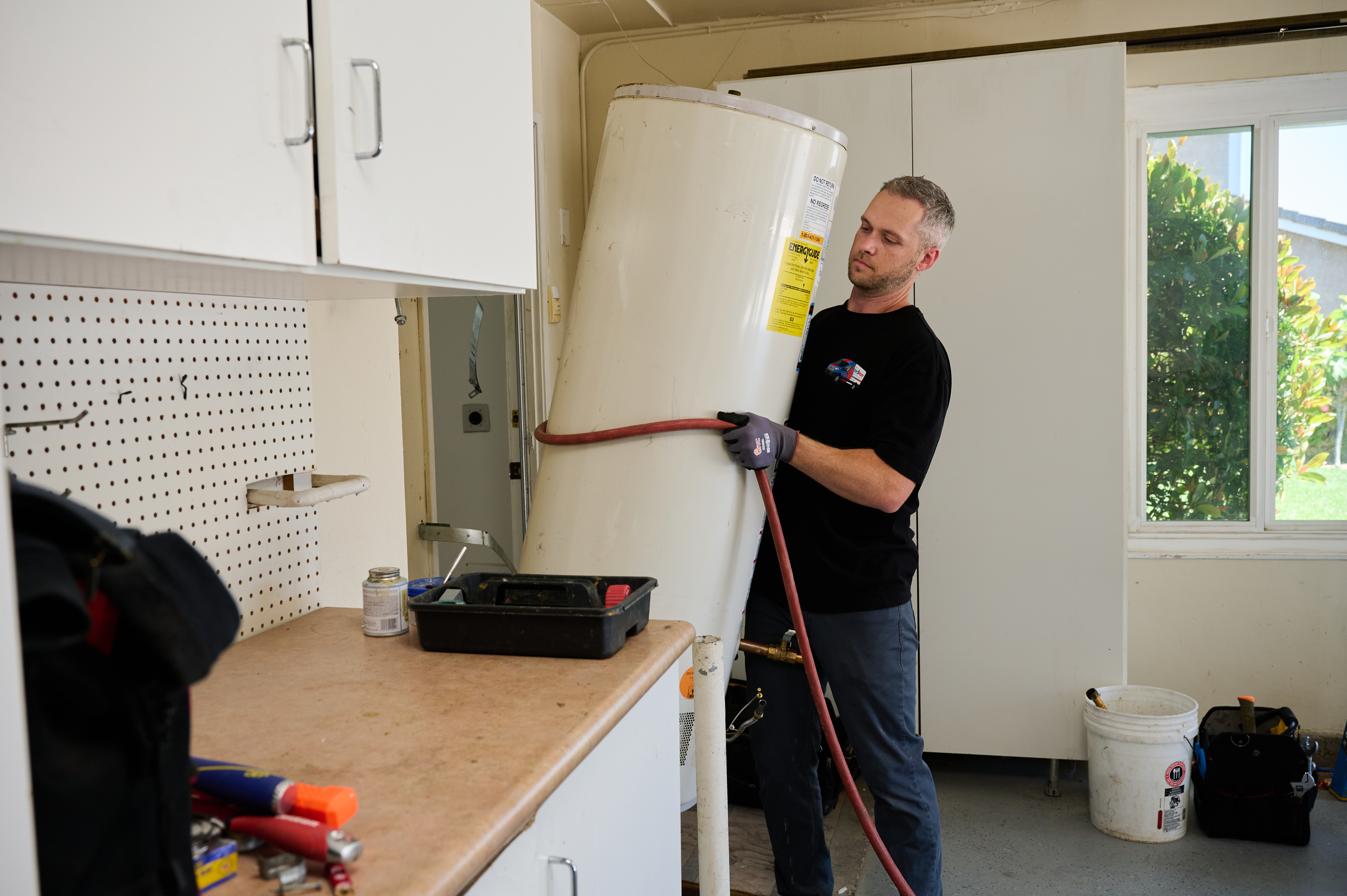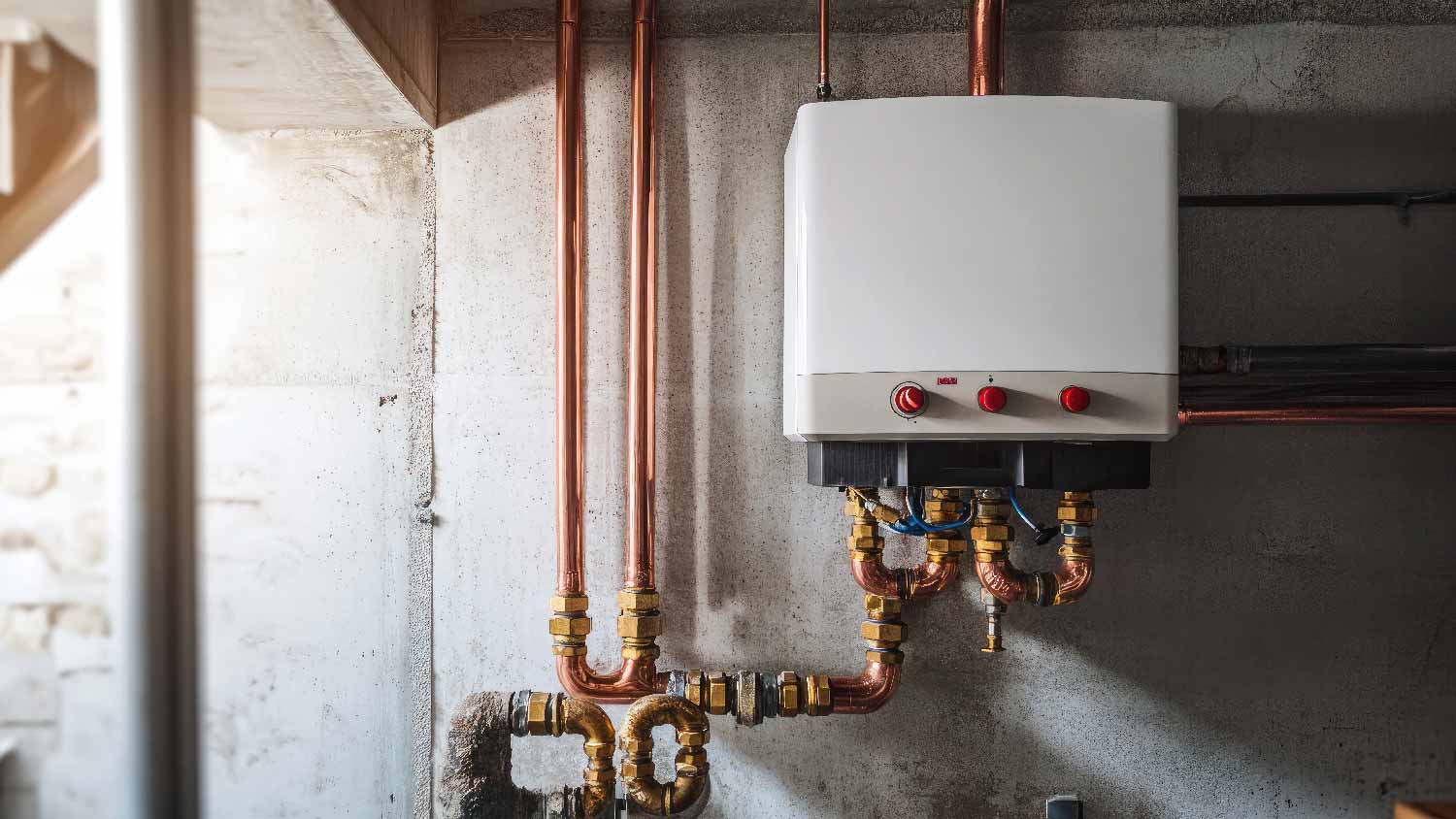
Looking to replace or upgrade your water heater? Use this water heater replacement cost guide to see what the work will cost and what factors affect your total.
Help your appliance last longer by learning how to drain a hot water heater


The hot water heater may be the hardest-working appliance in your home, but it’s also probably the appliance you think of the least. That is until it stops working—almost inevitably in the middle of a nice warm shower or laundry cycle—but you shouldn’t wait for signs of trouble to show your water heater some love. In fact, with a bit of routine maintenance, you can keep your water heater hot and humming for years to come. Regular draining and flushing are some of the best ways to promote water heater health.
Before you get started, put on heavy-duty rubber gloves and safety goggles to protect your hands and eyes. Make sure to familiarize yourself with your water heater unit and turn off the heater to give it a chance to cool down and prevent injuries from scalding water.

Review your water heater owner’s manual and the instructions posted on the side of your tank. These will help you identify where all the necessary drains and valves are.
Turning off the water heater is essential to avoid emergencies and injuries. For electric water heaters, locate the heater’s circuit breaker in your home’s electrical panel and turn it off. Make sure you also turn off the thermostat on the water heater itself because heating an empty tank can damage it. For gas water heaters, you will need to turn the gas supply valve to the “Pilot” setting.

If your heater has a valve connected to its water supply line, just turn the water off from there. But if there is no valve, you’ll need to turn off the supply at your home’s water meter.
Allow the water in the tank to cool down, or turn on the hot water faucets in your home to replace the hot water in your heater with cold water. Remember that the water can be very hot, so to avoid burns and scalds, you may want to wear protective goggles and gloves while working in the tank and drainage area. You’ll also want to keep children and pets clear of faucets and drains while you work.

If you haven’t already done so, turn on a hot water faucet in a sink or shower on the top floor of your home. This will release pressure in the line and ensure that a vacuum doesn’t form, which would prevent your system from draining and flushing completely.
Locate the pressure relief valve near the top of your water heater and the drain valve near the bottom. Attach a garden hose to the closed drain valve and place the other end in a drain bucket, sink, or outside. The hose should be lower than the drain valve to ensure a strong water flow. Again, take care to keep children and pets away from the discharge area, as the water may still be hot.
Note: If your water heater is in your basement, you may need a transfer pump to remove water from the tank and up and out of your basement. These pumps can be relatively expensive, but you can often rent them from home improvement stores for a wallet-friendly price.

Open the drain valve completely by turning it counterclockwise.
When the water stops flowing from the hose, turn on the water supply valve at the top of the tank or at the water meter. This will flush any remaining sediment from the heater.

When the water from the hose runs clear and free of sediment, shut off the water supply valve and close the drain valve, checking to ensure the drain is completely closed and leak-free.
Turn on the water supply line again and check the sink and shower faucets you had previously turned on. Ensure that the water from these faucets runs clear and free of sediment. If not, repeat the drain and flush steps until the water from the taps is clear. Once the water from the faucets has regained normal pressure, shut off the faucets.

You’re now ready to disconnect your garden hose and get your water heater up and running again. For electric heaters, turn on the thermostat on the heater and the circuit breaker at the electrical panel. For gas water heaters, turn on the gas supply line.
Set your water heater’s thermostat to 140 degrees Fahrenheit to help maximize energy efficiency and deter bacterial growth. And that’s it! You’re all set for another year of warm baths and clean laundry.
When to drain a water heater depends on several factors, from the age of your water heater and pipes to the metals and other elements in your water supply. On average, you should drain and flush your hot water heater at least once or twice a year. But you may need to do this more often if you live in an area where the groundwater supply has high levels of iron or other particulates.
You can also watch for signs that your hot water heater may need tending to. For example, if you notice discoloration or sedimentation in your water, it may be a sign that your tank is collecting mineral deposits, such as lime, magnesium, and calcium.
A good test is to compare the output from your hot and cold water faucets. It will be easier to do this if you collect water from the hot and cold faucets in clear glasses for a side-by-side comparison. If only the hot water is discolored or contains sediment, then that’s a strong indication that it’s your hot water heater, not the water supply in general.
Taking the time to drain and flush your hot water heater isn’t just about ensuring your hot water is clear and particle-free. It will also help prevent your heater and pipes from rusting internally. Routine draining and flushing will help your water heater run more efficiently and offer ways to reduce electric bills to produce significant savings in energy costs every year.
If you allow your water heater to collect mineral deposits, you’ll likely lose water pressure and experience burst pipes. Over time, sedimentation and corrosion can damage or cause water heater failure. You can spend as much as $1,500, not including installation, to replace your hot water heater far sooner than necessary. To get started, follow these steps for draining a hot water heater.
Draining a water heater is definitely a project you can complete yourself. The process is quite simple and quick after waiting for the water in the tank to cool off, which can take several hours. Don’t skip this step, as the water in a water heater can be extremely hot and can burn you if you come in contact with it before it has dropped in temperature. To be extra safe, wear heavy-duty rubber gloves and safety goggles to protect your hands and eyes.
If you don’t feel comfortable draining a water heater on your own, hiring a plumber near you to complete the task will cost you between $75 and $250, on average.
When hiring a water heater pro to drain your water heater or for other maintenance and repairs, you’ll want to ask a few preliminary questions of the contractor to make sure you’ve found one that can do the job well and at the right price. Make sure to talk to at least three water heater repair companies near you—there’s no need to hire the first one you contact. When you call them up, or during the inspection, consider asking these questions:
How much water heater experience do you have? What models have you worked with?
Are you licensed and insured?
What are your rates, and what are your requested payment terms?
Are you an authorized warranty service provider for any manufacturers? If so, which ones?
Do you have replacement water heater parts in stock for my unit?
Is there a guarantee on your work?
From average costs to expert advice, get all the answers you need to get your job done.

Looking to replace or upgrade your water heater? Use this water heater replacement cost guide to see what the work will cost and what factors affect your total.

Find out the average tankless water heater repair cost, what impacts pricing, and how to save. Get expert tips to plan your repair budget with confidence.

Wondering how much a water heater expansion tank costs? Use this cost guide to get an accurate estimate and learn how to choose the right one for your home.

What are some signs you need a new water heater? Get a look at the common signs your water heater needs to be replaced because damage is beyond repair.

The time it takes to drain a water heater varies by system. This article provides the details and explains what to do if your water heater is draining slowly.

The right water heater wire size keeps your home safe and your water hot. Learn how to choose which size your household needs.